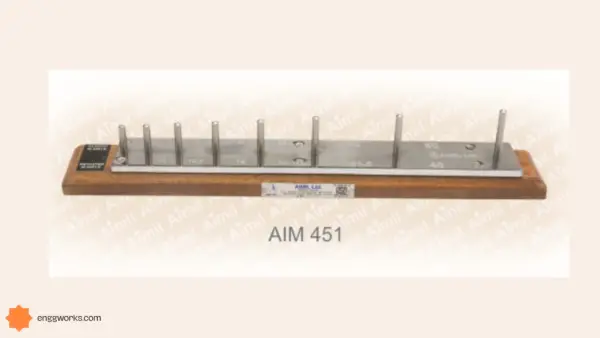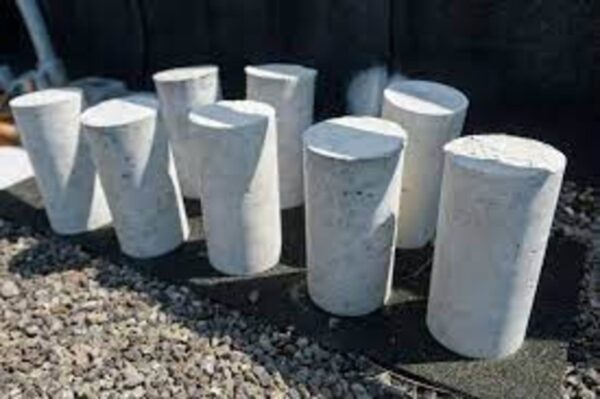Prestressed concrete is a form of concrete used in construction that has internal stresses induced to resist external applied loads. This post provides a comprehensive guide to prestressed concrete, covering its definition, advantages, disadvantages, methods, applications, and design.
What is Prestressed Concrete?
Prestressed concrete is concrete in which internal stresses are introduced to reduce potential tensile stresses in concrete resulting from applied loads. The principle behind prestressed concrete is that compressive stresses are induced by high-strength steel tendons in a concrete member before loads are applied that will balance the tensile stresses imposed in the member during service. This is achieved by tensioning the tendons or strands before the concrete has hardened and anchored to the concrete on either side of the cross-section.
The induced stresses (prestress) counteract the stresses resulting from the external load, thereby improving the performance of the structure. Prestressing results in cambered members due to eccentric pre-stressing.

Advantages of Prestressed Concrete
- Prestressing counteracts tensile stresses – The main purpose of pre-stressing is to induce compressive stresses that counteract the tensile stresses in concrete that result from applied loads. This improves cracking resistance and behavior under service conditions.
- Load balancing through pre-compression – The prestress levels are designed such that the section remains in compression under service load conditions. This is achieved by intentionally unbalancing the self-weight bending moment and introducing an equal and opposite pre-compression bending moment.
- Resistance to bending and shear stresses – Properly designed prestressed members are able to resist major bending moments and shear forces by the pre-stressing effect, requiring little or no non-prestressed reinforcement.
- Longer spans – Pre-stressing enables longer spans of up to 100m or more by improving load carrying capacity. Shallower members can be used for the same spans compared to RCC.
- Limited cracking – Cracks are limited to small widths (less than 0.3mm) at service loads. This improves durability and aesthetic appearance.
- Deflection control – The pre-camber introduced in prestressed members offsets dead load deflections, minimizing total deflections at service loads.
- Efficiency – Prestressed concrete is highly efficient with a high strength to weight ratio, enabling structural economies.
- Durability – Proper pre-stressing ensures very limited cracking even after decades of service, improving the durability of structures.
- Pre-fabrication – Prestressing lends itself to prefabrication of units like beams, slabs, piles that are transported and erected on site.
- Specialized design – Prestressed concrete requires specialized design expertise to determine prestress levels, anchorage detailing, loss estimation, and analysis.
- Reduced section sizes – For the same loading, a smaller prestressed section can be used compared to a conventional RCC section. This reduces the self-weight of the members.
- Limited crack widths – Cracks are limited to very small widths at service loads. This improves durability and is aesthetically pleasing.
Disadvantages of Prestressed Concrete
- Higher cost – Prestressing systems require specialized equipment, materials, and skilled labor, increasing costs.
- Loss of prestress – Loss of prestress occurs over time due to creep, shrinkage, anchorage slip, and steel relaxation. Proper design is required to account for these effects.
- Specialized design – Prestressed design is more complex than conventional RCC and requires specialized engineering.
- Transport restrictions – Large precast prestressed elements may be restricted by transportation limitations.
- Fire endurance – Spalling of concrete can occur under fire exposure due to the presence of prestressing steel. Fire protection is required.
Methods of Prestressing Concrete
There are two main methods used for prestressing concrete:
Pre-Tensioning
In pre-tensioning, tendons or strands are tensioned between fixed anchorages before the concrete is cast. After the concrete hardens, the tendons are released transferring the stresses to the concrete. This method is commonly used for precast prestressed elements.
Post-Tensioning
In post-tensioning, conduits are cast into the concrete member during construction. After the concrete has hardened, the tendon is passed through the conduit and then tensioned using jacks. The prestress is transferred to the concrete by anchoring the ends.
Difference between RCC and Prestressed Concrete
| Reinforced Concrete (RCC) | Prestressed Concrete |
|---|---|
| Does not contain pre-induced stresses | Contains pre-induced compressive stresses |
| Reinforcement is passive | Reinforcement is active |
| Undergoes larger and wider cracking | Experiences minimal cracking |
| Limited span to depth ratios | Allows longer span to depth ratios |
| Simple design | Complex prestress design required |
| No restrictions on construction sequence | Requires specialized construction sequence |
| Less durable | Highly durable |
Types of Prestressed Concrete
Some common types of prestressed concrete members include:
- Prestressed concrete beams
- Prestressed concrete slabs
- Prestressed concrete piles
- Prestressed concrete poles
- Pre-tensioned hollow core slabs
- Post-tensioned flat slabs
- Pre-tensioned bridge girders

Pre-Tensioning vs Post-Tensioning
| Pre-Tensioning | Post-Tensioning |
|---|---|
| Strands are pre-tensioned before concrete placement | Strands are tensioned after concrete hardens |
| Used for precast members | Used for cast-in-place members |
| Entire cross-section is pre-compressed | Only the region near strands is pre-compressed |
| Handling stresses need to be considered | Minimal handling stresses |
| Prestress losses occur immediately after release | Losses occur gradually over time |
| Tendons are straight | Tendons can be draped in any profile |
Prestressed Concrete Applications
Some common applications of prestressed concrete include:
- Highways – Prestressed concrete girders for bridge decks
- Buildings – Floor slabs, beams
- Water tanks – Circular prestressed concrete tanks
- Sewage and water pipes – Pre-tensioned hollow core pipes
- Electric poles – Spun prestressed concrete poles
- Railways – Sleepers, track slabs
- Nuclear vessels – Containment structures
- Stadiums – Prestressed concrete stands
Prestressed Concrete Bridge Design
Some key considerations in design of prestressed concrete bridges:
- Selection of concrete girder shape – I, T, or box girders
- Determining number of girders
- Designing for dead, live, impact, wind loads
- Checking stresses at transfer and serviceability
- Estimating prestress losses
- Anchorage zone design
- Checking shear capacity
- Camber calculation
- Bearing pad design
- Diaphragm design
Prestressed Concrete Slab Design
Key steps in design of prestressed concrete slabs:
- Analysis for bending moments
- Selection of slab thickness
- Determining prestressing force and eccentricity
- Designing prestressing tendon profile
- Checking stresses at service loads
- Detailing reinforcement
- Designing end anchorages
- Camber calculation and detailing
- Designing openings, if any
Prestressed Concrete Beam Design
Major steps involved:
- Determining loads, spans, end conditions
- Selecting beam cross-section shape and depth
- Designing for shear
- Estimating prestress losses
- Designing anchorage zones
- Checking stresses at transfer and service loads
- Detailing prestressing strands
- Designing non-prestressed reinforcement
- Control of deflections
- Finalising camber
Prestressed Concrete Retaining Walls
- Prestressed concrete counterfort, cantilever, and base wall types used
- Wall sections are precast in segments for easy construction
- Prestressing allows large spacing between counterforts or piles
- Precast segments are erected and prestressing tendons tensioned on site
- Watertight joints between units to be ensured
- Design requires appropriate drainage provisions
Examples of Prestressed Concrete Structures
Some landmark prestressed concrete structures:
- Burj Khalifa, Dubai – World’s tallest building used post-tensioned core walls
- Gateway Bridge, Brisbane – Major prestressed concrete cable-stayed bridge
- Millau Viaduct, France – Cable-stayed bridge with prestressed concrete deck
- Willis Tower, Chicago – First building with post-tensioned core for resisting lateral loads
- Bahrain World Trade Center – Two 50 story towers built using post-tensioned concrete cores
- Palm Jumeirah, Dubai – Post-tensioned concrete used in artificial island construction
Conclusion
In summary, prestressed concrete offers significant advantages for modern construction due to its high strength, crack control, durability, and long span capabilities. With the right design and construction methods, prestressed concrete enables efficient and economic structures.
However, the higher costs associated with prestressing must be weighed against the benefits for each project. Understanding the principles of prestress and making appropriate choices of system and member type is key to harnessing the maximum potential of this versatile construction material.







